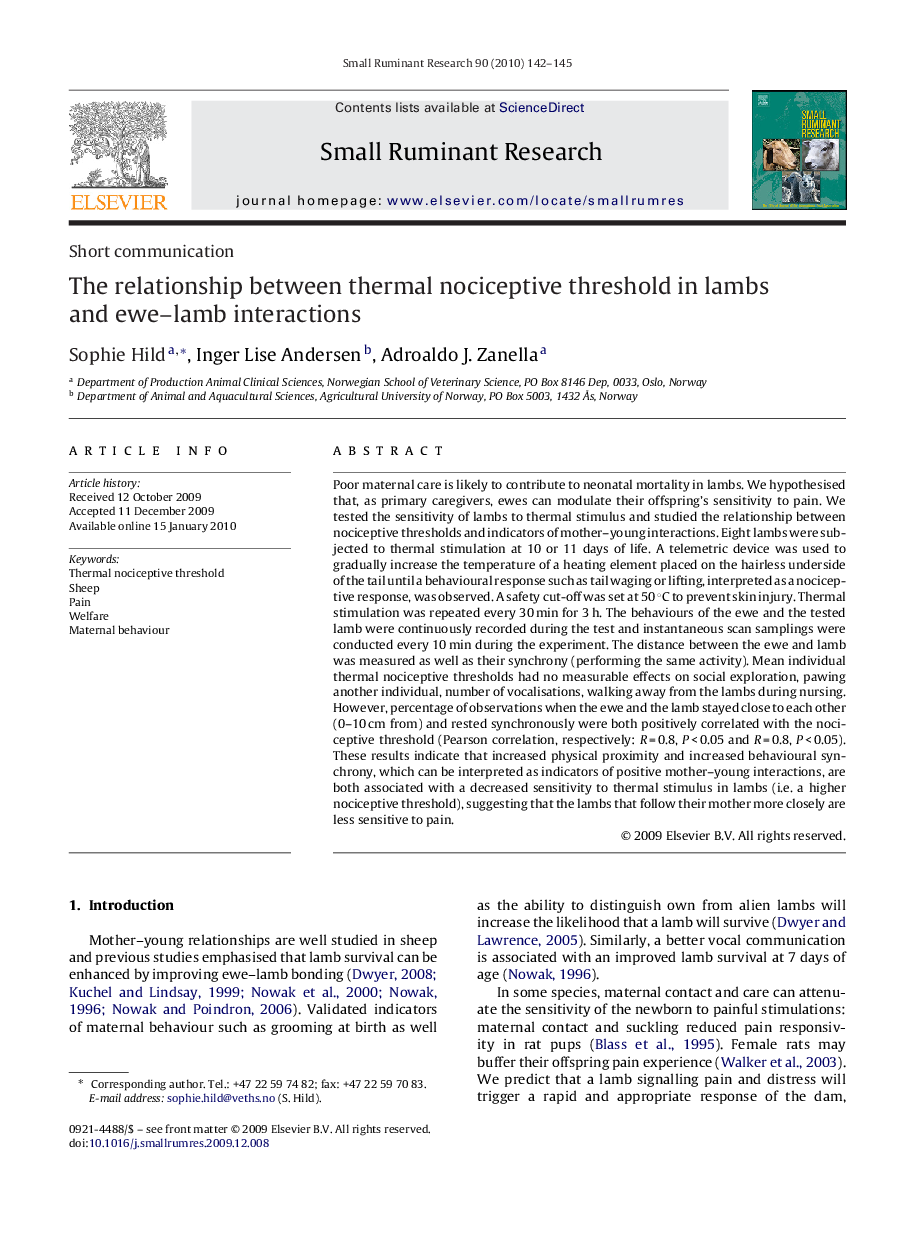| کد مقاله | کد نشریه | سال انتشار | مقاله انگلیسی | نسخه تمام متن |
|---|---|---|---|---|
| 2457508 | 1554402 | 2010 | 4 صفحه PDF | دانلود رایگان |
عنوان انگلیسی مقاله ISI
The relationship between thermal nociceptive threshold in lambs and ewe-lamb interactions
دانلود مقاله + سفارش ترجمه
دانلود مقاله ISI انگلیسی
رایگان برای ایرانیان
موضوعات مرتبط
علوم زیستی و بیوفناوری
علوم کشاورزی و بیولوژیک
علوم دامی و جانورشناسی
پیش نمایش صفحه اول مقاله

چکیده انگلیسی
Poor maternal care is likely to contribute to neonatal mortality in lambs. We hypothesised that, as primary caregivers, ewes can modulate their offspring's sensitivity to pain. We tested the sensitivity of lambs to thermal stimulus and studied the relationship between nociceptive thresholds and indicators of mother-young interactions. Eight lambs were subjected to thermal stimulation at 10 or 11 days of life. A telemetric device was used to gradually increase the temperature of a heating element placed on the hairless underside of the tail until a behavioural response such as tail waging or lifting, interpreted as a nociceptive response, was observed. A safety cut-off was set at 50 °C to prevent skin injury. Thermal stimulation was repeated every 30 min for 3 h. The behaviours of the ewe and the tested lamb were continuously recorded during the test and instantaneous scan samplings were conducted every 10 min during the experiment. The distance between the ewe and lamb was measured as well as their synchrony (performing the same activity). Mean individual thermal nociceptive thresholds had no measurable effects on social exploration, pawing another individual, number of vocalisations, walking away from the lambs during nursing. However, percentage of observations when the ewe and the lamb stayed close to each other (0-10 cm from) and rested synchronously were both positively correlated with the nociceptive threshold (Pearson correlation, respectively: R = 0.8, P < 0.05 and R = 0.8, P < 0.05). These results indicate that increased physical proximity and increased behavioural synchrony, which can be interpreted as indicators of positive mother-young interactions, are both associated with a decreased sensitivity to thermal stimulus in lambs (i.e. a higher nociceptive threshold), suggesting that the lambs that follow their mother more closely are less sensitive to pain.
ناشر
Database: Elsevier - ScienceDirect (ساینس دایرکت)
Journal: Small Ruminant Research - Volume 90, Issues 1â3, May 2010, Pages 142-145
Journal: Small Ruminant Research - Volume 90, Issues 1â3, May 2010, Pages 142-145
نویسندگان
Sophie Hild, Inger Lise Andersen, Adroaldo J. Zanella,